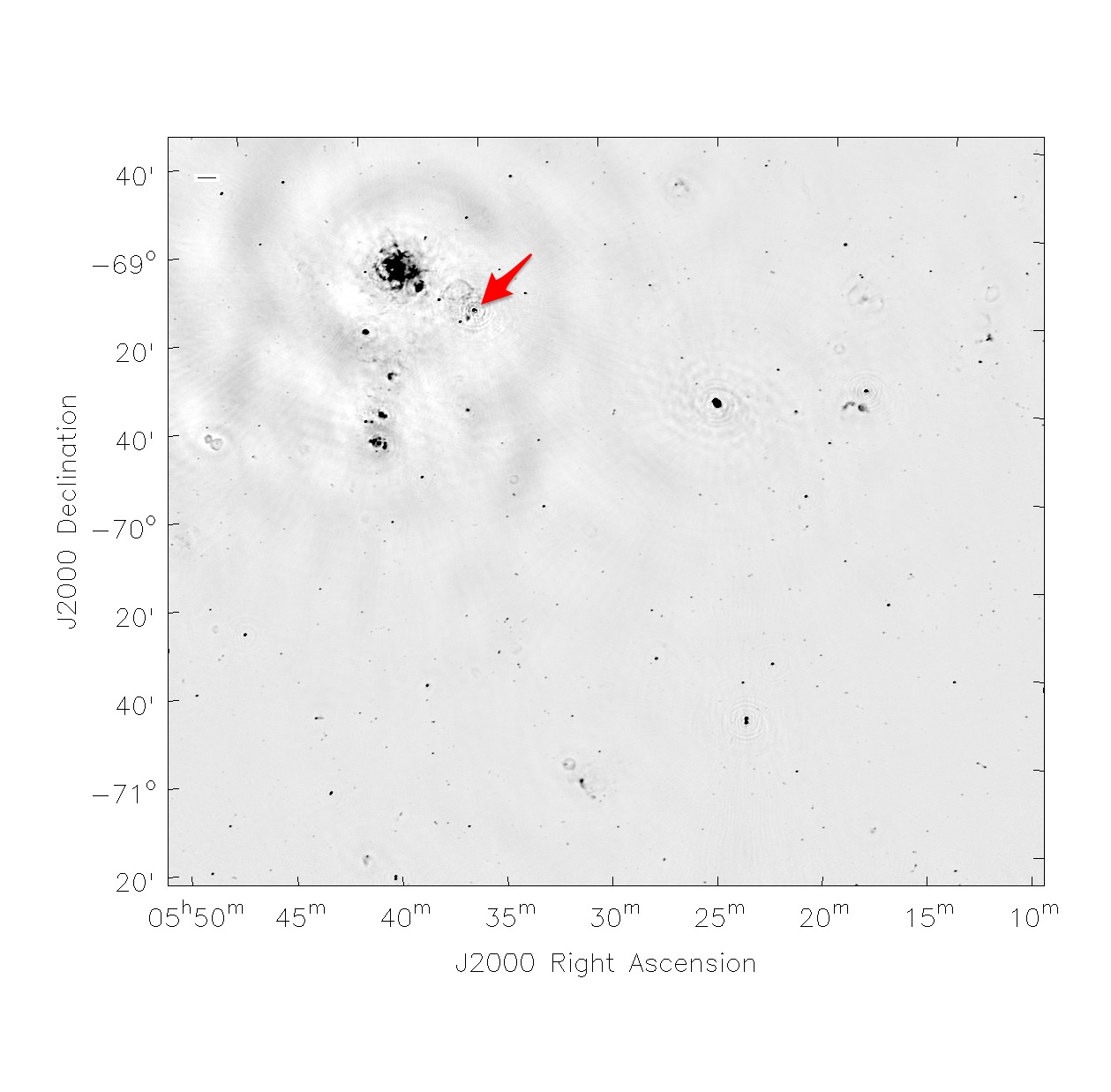New Project Scientist for ASKAP
ASKAP’s new Project Scientist, Dr Aidan Hotan, talks about his early involvement in ASAKP and what the path to full science operations looks like to him.

Dr Aidan Hotan
Where does Dr Aidan Hotan fit in the ASKAP story?
Aidan joined CSIRO in 2011 to work on ASKAP commissioning. At that point, the first prototype hardware components were being assembled at Marsfield in Sydney. He spent a lot of time writing control scripts to automate basic test routines and learned a lot about the telescope’s design philosophy.
The installation of the first generation (Mk I) of CSIRO’s phased array feed (PAF) receivers on a 12m test antenna, at CSIRO’s Parkes Observatory, enabled him to do single-dish experiments with an antenna the same size as ASKAP’s antennas at the Murchison Radio-astronomy Observatory (MRO). He also conducted single-baseline interferometry between the test antenna and the 64m Parkes radio telescope, via an RF-over-fibre link. During these early experiments Aidan learnt about beamforming and the unique characteristics of ASKAP’s chequerboard PAF design.
He moved on to work with several sets of Mk I hardware at the MRO, back in the days when the beamformers and correlators were housed in a modified shipping container – now there’s a purpose built 800 square metre control building. This grew into the six-antenna ASKAP prototype array known as BETA.
As Aidan explains: “Operating the prototype systems in these remote conditions taught us a lot about the need for reliability and the challenges of field maintenance at the MRO. Combining this with our measurements of PAF performance at Parkes led to some important design revisions and the much improved second generation, or Mk II, systems that we’re using today. There were a few challenges but we produced some interesting science demonstrations (and quite a few papers) from BETA”.
Today, activity revolves around commissioning the full ASKAP system and Aidan’s role is evolving from its early focus on testing hardware and software components to a more holistic view of the telescope and the quality of the astronomical images that it can produce – an exciting time!
How does Aidan see the role of ASKAP project scientist?
“My role as project scientist is to provide the link between our international Survey Science Teams (SSTs) and CSIRO to help the astronomy community get the most out of this new instrument. To do this I need to understand the goals of the science community and effectively communicate the capabilities and limitations of the telescope; and work with engineers to ensure that continued development efforts will improve on existing capabilities.”
Aidan says one of the main challenges is to deal with multiple conflicting priorities for time on ASKAP itself, especially during the transition from construction to operations. The aim is to deliver a national facility instrument that produces high-quality data for everyone.
What’s happening in ASKAP Science?
In October 2016, CSIRO conducted the first round of Early Science observations. This program was planned with the assistance of the SST members as an intermediate stage between installation and full operations. The idea is to conduct reduced-scale surveys that still test the end-to-end capabilities of the telescope and provide interesting science data in their own right.
Early Science is being conducted with an array of 12 antennas fitted with Mk II PAFs. With these 12, the system is sensitive enough and has sufficient UV coverage to make good quality images that enable the detection of any low-level issues that need to be solved before embarking on full survey observations.
The first round of observations provided several data sets that are being scrutinised by the ASKAP Commissioning and Early Science (ACES) team and some of the results will be released to ASKAP’s publicly available science data archive called CASDA.
“In the process of growing ASKAP from 12 to 36 antennas, we have uncovered some stability issues that are being resolved and meanwhile we continue to learn from the data in hand,” Adian said.
“We’re also finding that unexpected outcomes can lead to important scientific results. We hadn’t planned to commission a mode for fast transient capture until well into the Early Science program, for example, but the firmware developments were completed ahead of time. The CRAFT group has since used this capability to detect three new fast radio bursts as proof that ASKAP’s wide field-of-view makes it uniquely suited to detect rare transient events.”
What’s next and how will you communicate ongoing updates with interested groups and stakeholders?
ASKAP will transition from Early Science to full operations during the next 18 months. For Aidan this means tuning and retuning the parameters of the system in order to produce the best possible scientific output.
“Communication is the key here: I’m planning to continue the monthly Early Science forum teleconferences as well as providing a regular commissioning newsletter, published in the week before each forum.
We also have a new online documentation page that provides quick access to policy documents, data processing logs, pipeline instructions and more.”
The ACES team remains a core component of commissioning activities and Aidan encourages all SST members to consider joining in the regular ‘busy weeks’ that the team hosts around the country.
Read Aidan’s monthly commissioning newsletter.

This image is the result of a 10 hour observation with 10 antennas,192 MHz of bandwidth centred on 964 MHz and 9 beams in a 3x3 square arrangement. The field lies within the Large Magellanic Cloud, one of the Milky Way's satellite galaxies, and the famous star-forming region known as the Tarantula nebula can be seen in the upper-left part of the frame. The red arrow points to radio emission from supernova SN1987a, along with several older radio shells dotted throughout the region.
